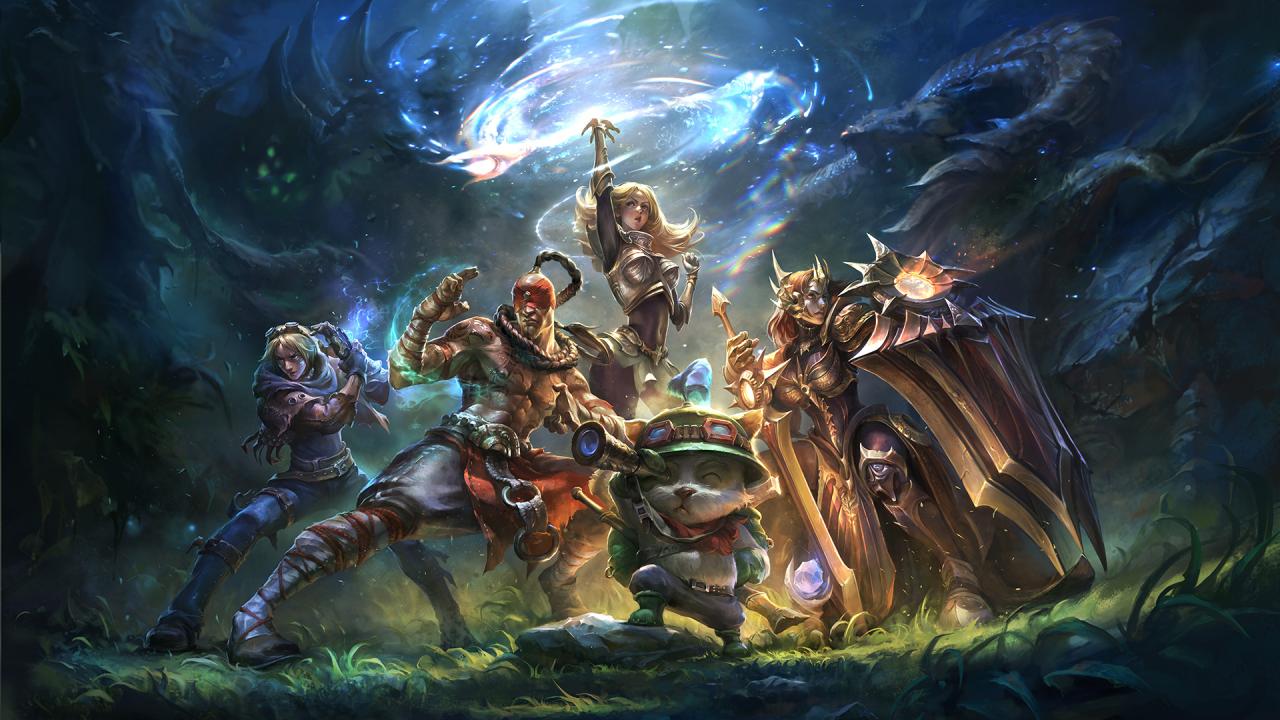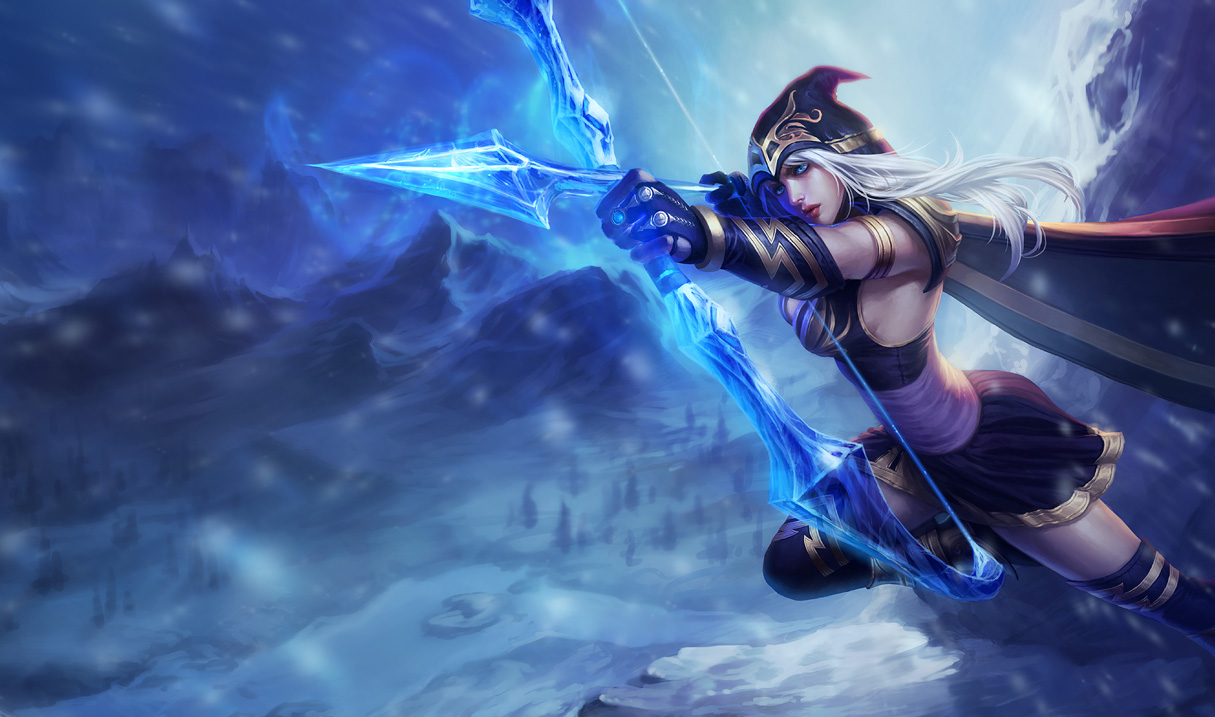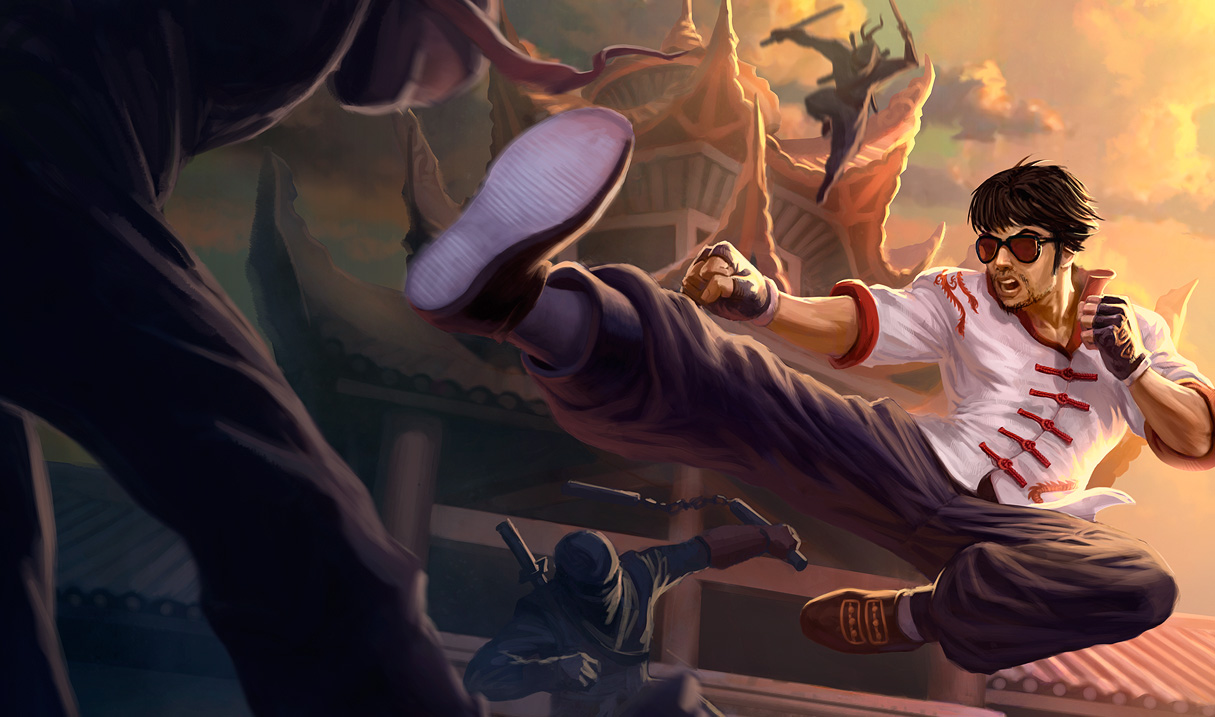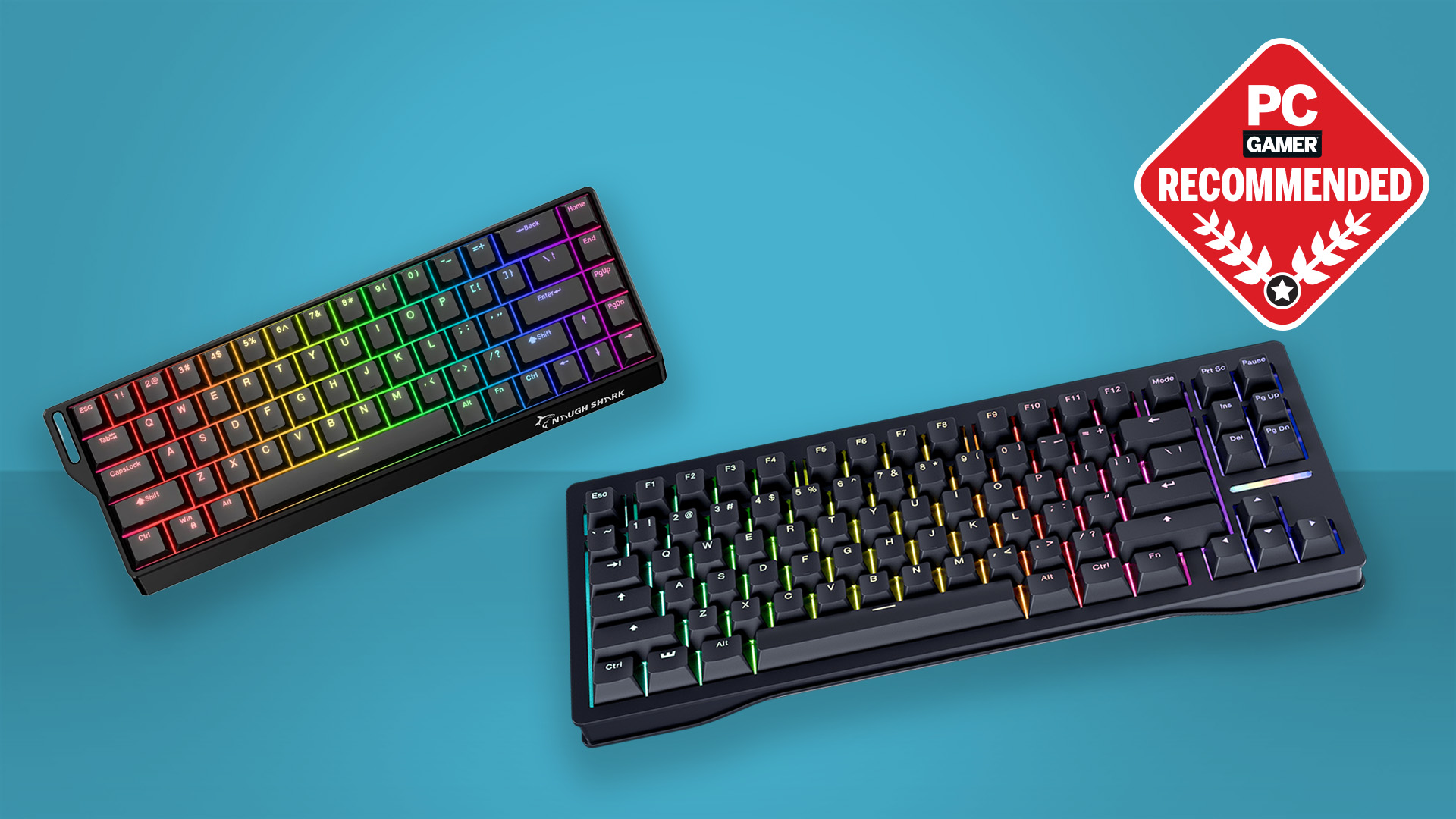Fixing your fundamentals in League of Legends

Lane-pushers tend to be very divisive games: you're either a fellow addict, or aspects of it repulses you deeply—usually the community. The problems are well-known, and inextricably tied to the nature of the game: the extremely teamwork-oriented nature of League of Legends means that all of your allies and yourself stand as potential and catastrophic failure points. It almost doesn't matter how well you're doing if your teammates totally trip over themselves, and it's conversely vivid and painfully obvious when you're the one weighing everybody else down.
Of course, the same pain points are its strengths. It feels good to be part of the reason why a team won—good enough to be addicting. When you pull off a successful wombo combo, leading to a downed nexus, the frisson of accomplishment is a potent endorphin rush, and you're even inclined to feel positively of the four others that helped you to that point.
The main problem is how to get to that point when you don't have anybody to handhold you through the basics. Even I only got into the game, after a few frustrating starts, because of the patient assistance of a few old high school buddies willing to give me pointers—and it took longer yet before I had any confidence in my contributions, given that one of them was Diamond-ranked when I started and was, in fact, skilled enough to carry the game on his own versus lower-tiered players. Secretly, that was just yet another reason to get addicted, as skill progression in games like League are at a steady enough clip that you're able to notice the progress. You're hooked into thinking that it'll take just a little more effort before you, too, pick up pentakills.
It also leaves most people blind to how much effort they'd put into the game to get that far, and frustrated why newcomers can't grasp seemingly simple concepts.
One of my friends, fervently in the non-MOBA camp, describes it as such: by the tribunal guidelines laid down by Riot, he would absolutely be reported after every game, and absolutely deserve it. Because when his teammates, frustrated by my friend's lack of competence and success, tells him "stop feeding," he's going to take it as a cue to park his ass back in base and walk away from the keyboard. After all, he knows he shouldn't be giving up kills. He knows he should be more careful. But if his own teammates are going to harass him without actually offering any useful advice, he isn't going to just donate more than half an hour of his time to a bunch of hostile people.
Now, what would help best is if there was some sort of officially supported mentorship program, where people can volunteer to teach, others can sign up to be taught, and both get rewarded materially for good behavior (the more IP for newbies the better, quite frankly—getting a ranked-ready rune page up is time-intensive). In lieu of that, new League players can at least get by with some basic tips for how to survive on Summoner's Rift.
Don't feed

It's obvious why teammates get frustrated when somebody racks up a double-digit death count: at roughly 300 gold per death, that's a LOT of cash they donated to the enemy team, and a lot of items the enemy team subsequently bought to make life rough for the rest of the feeder's team. But what's not so obvious is how to avoid doing so: when you've just entered the game for the first time, you haven't yet grown the instinctive grasp of spell ranges and potential threats everybody else seems to have.
Keep up to date with the most important stories and the best deals, as picked by the PC Gamer team.
The good news is, developing that sense is easy enough. You're even provided with a champion right off the bat that gives you a good sense of it. Though Ashe is currently a terrible AD carry all around, her extremely long auto-attack range matches roughly with the engagement ranges of common gap-closers and spell effects. A new player should absolutely use her to practice switching between attacking and moving—and, if at all possible, learn to do so by alternating between basic move commands and attack-moves (or holding the "A" key, then left-clicking as normal).
Why a-moves? To minimize chance of error. Normally, the move and attack commands are identical, just contextualized by whether you've clicked on an empty patch of floor, or if you've clicked within the hitbox of a viable target. The problem is if you misclick: if you hit the floor next to your opponent, you'll walk toward them and into spell range instead of safely firing off arrows at range. A-moving, on the other hand, tells your champion to only close in far enough to get an attack off, guaranteeing safe (or safer) range of engagement even if you misclick—your champion will attack the first hostile target within range, then move if none others are nearby.
It's not the easiest trick to learn, but that just makes it all the more important to pick it up early. If you find yourself feeding, check to see how much of it is simply because you walk a little closer to the fight than you wanted to—or, at least with bruisers, just at the wrong time.
Don't facecheck

Of course, covering just micro-level range management isn't going to save anybody if Sejuani appears from behind you and rams her giant pig right up your unmentionables. Junglers are the great equalizers of the game, explicitly designed to show up at the worst moment to ruin your day. But they aren't ghosts, ineffable and impossible to avoid: there are plenty of ways to keep them in check, and they cost a mere 75 gold apiece!
Yes, I know: "USE MORE WARDS" is a League cliché by now. The idea that Garen's waiting in every bush to ambush you has been ground into the community conscious since Season 1. But you can't just scatter the little green things willy-nilly and expect them to miraculously prevent ganks on their own—I see even pro players dump them in their own jungle, for example, hoping to catch an invade while it happens, and it's frustrating how pointless this is. Wards that aren't in neutral or hostile territory tell tales too late: by the time they spot the enemy jungler, all you know is when you'll be forced to fight. It'll be too late to actually avoid the engagement—better, almost always, to drop them at neutral range, like by the river, or in the enemy's side of the map to scout movement before their plans solidify.
Of course, all the wards in the world are pointless if nobody looks at the minimap, and that, above all, is what's causing so many deaths in the lower-level queues. Players complain a lot if you don't point out when the enemy's left the lane, but frankly? It was their business to know. Quick and frequent glances at the minimap are a winner's habit: do it often enough, and you can guess what's about to happen based off what you don't see.
Do farm
All of the above lends credence to my friend's idea of just hanging back and not doing anything. But that's a form of feeding too, mathematically: the gold differential between you and your counterpart on the enemy team is something you can control, and deliberately allowing them to get significantly ahead means that your team can't rely on you to provide counter-pressure from the same role. While it isn't giving the enemy team gold directly, it works out to the same effect, and is to be avoided for the same reasons.
But how to do so? The standard lane compositions in solo queue help here: since you're going to spend 99% of your games facing a player trying to do your job against you, it's pretty easy to track how aggressively or passively they're farming. If they're attacking everything, pushing as aggressively as possible, it's a good idea to try and keep up—letting them push you back just makes life harder for you as you struggle to fight your own turret for last-hits.
Idly: when farming under turret, it's good to know how to get last-hits despite the turret shots. Generally, you want the turret to land two hits on melee minions before you take a shot, and you want to make an auto-attack on a ranged creep before the turret hits them, then finish up. This changes as you itemize, but is generally appropriate for the first 15 minutes.
Conversely, if they're playing passively, it's usually a good idea to slow down the pace of your farm as well, and focus only on last-hitting minions. The reason to keep equal pace ties in with the tips preceding this section: minimap and range awareness is very important if you think the jungler's liable to approach. The middle of the lane is neutral territory, safe from your own turret and hard to gank, so managing your farm to match pace with your opponent is a good way to stay in that range.
Don't despair
The most important skill to learn in League has nothing to do with mechanics, skill shots, vision management or anything in the game code. All that comes with time, practice, and a little research. But it's your mental game that turns these disparate techniques into coherent skill—and strength of character is hard to teach.
You are going to have games where you're simply outmatched. Games where your teammates are outright liabilities. Games where, no matter what you do, you can't seem to get an edge.
Don't despair. It isn't as hopeless as it looks. If anything, turnaround games are more common nowadays, ever since they took the gold bounty off Dragon—it's harder for a team to pull out the early 10,000 gold leads we've seen in prior years. And the nature of the game is such that even if you fall behind, there's still a chance to win a fight.
Since the enemy team's damage-dealers will usually build like glass cannons, it's possible to beat a team that's well ahead of you by better positioning and setting up ambushes. If you can patiently wait for the chance to jump their AD carry and mid laner, especially at around 50 minutes into the game, what seemed like an inevitable loss is suddenly a white-knuckle victory!
So hesitate a bit before you confirm that forfeit vote. As bitter as defeat is, the taste of comeback is sweeter than my words can do justice. Almost as sweet as the tears of your defeated opponents!

